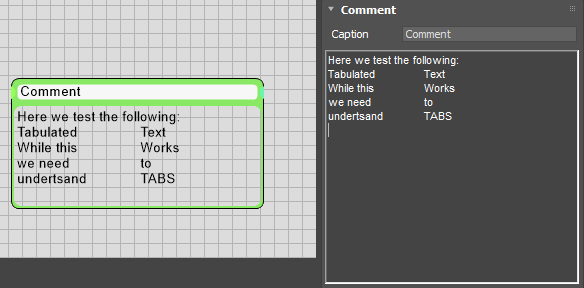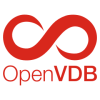Table of Contents
7.3 Service Pack 4
Welcome to thinkingParticles 7.3 SP4. In our ongoing journey to serve the needs and expectations of 3D artists around the globe, cebas VISUAL TECHNOLOGY Inc. will periodically release new major versions of its software for thinkingParticles. It is strongly recommended that you always keep your software up to date.
First time users upgrading to tP7 should note this important: Information
thinkingParticles 7.3 is the next step in our journey, building upon the groundbreaking release of Version 7. With the introduction of true MPM solvers for creating physically based simulations for grain and snow, we have further expanded the capabilities of thinkingParticles in this latest release.
Here's a summary of what's new in thinkingParticles 7.3 SP4:
Nodes Updates New Features
New SPH Fluid Solver Updates
Introducing: SPH 7.3 Fluid Solver, a groundbreaking enhancement within thinkingParticles 7.3 Service Pack 4. This latest release redefines fluid dynamics by unleashing an unprecedented splash experience.
Through an extensive core solver rewrite and meticulous fine-tuning, SPH 7.3 delivers enhanced splashing behavior with remarkably realistic incompressible pressure dynamics. As the most advanced SPH solver in the thinkingParticles arsenal, version 7.3 seamlessly integrates into the workflow, maintaining full procedural capabilities and surpassing its predecessors in multi-physics coupling. Notably, pressure transfer from Rigid Body dynamics achieves newfound robustness, setting an unmatched standard in the 3ds Max VFX realm. Upgrade to SPH 7.3 and experience a new level of fluid simulation excellence. To learn more Click HERE
Math - the Math helper gained a new additional option “A != B” which can be used to trigger a situation when value A is not equal to value B. To learn more CLICK HERE
SnapShot - now features the “Merge To First (A)” option. When utilized, this option allows merging with the first particle connected to Particle input port A. If particles are fed into Particle Port B, they will be merged and added to Particle A instead of creating a new particle.
To learn more CLICK HERE
Comment - The Comment Node now supports tabulated spaces, making it easier to create table-like descriptions or organized lists with names and corresponding numbers. This enhancement improves the node's versatility and user experience.

Memory - The newly introduced “Show Primary Only” option allows you to display memory slots whose values have been actually initialized.
To learn more about this new feature CLICK HERE
AddMultiply - This node has been enhanced to support the addition of multiple input ports. Previously, it was only possible to add/multiply Input A with Input B. Now, any number of additional B ports can be added, providing greater flexibility in mathematical operations.
To learn more about this feature CLICK HERE
New Systems
Explosion System - offers pre-built Nodes, streamlining the process of generating complex explosions. These Nodes consist of ready made setups, including Burst, Debris, Spike, Shock Wave, and more, each responsible for different aspects of an explosion effect.
The Explosion System provides easy-to-use interfaces for controlling parameters like Global Scale, Global Speed, Expansion Curve, and more, allowing artists to fine-tune the characteristics of the explosion. Additionally, it offers features like the Kill Particles Node to efficiently manage particle removal and the Turbulence Node for introducing random motion.
Users can create various types of explosions, from ground explosions to aerial ones, and customize the behavior of individual components like shock waves, debris, and condensation rings. The Explosion System emphasizes flexibility, enabling artists to achieve realistic and diverse explosion effects while maintaining ease of use.
To learn more about the Explosion System CLICK HERE
New ME-L Functions / Additions:
Within this update, thinkingParticles unveils a host of additions to ME-L that not only expedite the Visual Effects creation process but also introduce novel and powerful methodologies previously unexplored. The meticulous fine-tuning of ME-L is underway, promising to grant 3D artists newfound freedom to create and visualize Visual Effects in ways never before deemed possible. This update reaffirms our commitment to providing cutting-edge tools that inspire creativity and efficiency in the world of 3D Visual Effects.
Find below the new Features and Functions along with workflow enhancements.
slerp - Introducing two new function calls in the ME-L scripting language to facilitate Spherical Linear Interpolation.
To learn more CLICK HERE
nturbulence - computes a 3D vector turbulence field, allowing users to introduce controlled perturbations into simulations for realistic and dynamic visual effects.
To learn more Click HERE
cgradient - Interpolates colors between two values from a list, providing dynamic color transitions based on scalar input.
To learn more Click HERE
dprint - offering enhanced flexibility in the dprint function with the introduction of formatting options. Now featuring additional formatting capabilities, dprint allows users to refine the display of information, providing a more streamlined and customizable debugging experience. Explore the power of these new options to tailor your output according to specific needs, offering a more refined and efficient debugging process.
enhancement dprint extendet to 11 outputs.
To learn more Click HERE
dmarker - a powerful addition to thinkingParticles that facilitates the dynamic creation of markers in the 3ds Max viewport. This function provides users with the ability to define marker types, set positions, choose colors or intensities, and customize lifespans. Elevate your visualization experience by strategically placing markers at key points within your scenes.
To learn more Click HERE
dtext - a dynamic function enabling text display in the 3ds Max viewport. This versatile function supports customizable parameters, including type, position, color, size, and content. Elevate your visualization experience by incorporating dynamic text elements into your scenes.
To learn more Click HERE
dline , a function for drawing lines in the 3ds Max viewport. This function supports customizable parameters such as type, color, and duration, providing a straightforward method to enhance visual representations in your scenes.
To learn more Click HERE
pshape_geom - new functionalities allow users to manage vertex colors more effectively, aligning with 3ds Max conventions. Additionally, a method has been incorporated to access vertex colors in a manner consistent with 3ds Max, addressing the specific way colors are stored in Vertex Color Channels. Explore the expanded capabilities of pshape_geom to refine your control over mesh-specific data retrieval.
To learn more Click HERE
OpenVDB has been updated

Core update to OpenVDB Version 11.0.0. Now, offering hundreds of enhancements and tweaks to the core of the industry leading suite of tools for efficient storage and manipulation of sparse volumetric data discretized on three-dimensional grids.
This new version includes previous updates including an increase of the performance of volumeToMesh by 10-15%.
ReNormalizeVDB - added a new function to select from different trim options for voxels that fall outside the narrow band. To learn more CLICK HERE
ResizeVDB- added a new function to select from different trim options for voxels that fall outside the narrow band. To learn more about this feature CLICK HERE
Bug Fixes
- Node clone doesn't inherit custom color: The issue where custom colors were not inherited during the cloning process of a node has been addressed. Now, when you clone a node, it correctly retains the custom color settings.
- MEL, recompile without input desc doesn't remove node inputs: In MEL (Maya Embedded Language), the recompile process without input descriptions failed to remove node inputs as expected. This issue has been resolved, and now the recompilation process behaves as intended.
- pshape_geom_set set vert color crash: A bug causing a crash when using the pshape_geom_set to set vertex colors has been fixed. The application now handles this operation without crashing.
- OpenVDB Load not loading all particle VDB files and correcting velocity values suitable to the particle tm: The OpenVDB Load function was not correctly loading all particle VDB files, and the velocity values were not adjusted according to the particle transformation matrix. This issue has been addressed, ensuring proper loading and velocity adjustments.
- OpenVDB, ShapeToVolume, include particle velocity in height values: In the ShapeToVolume operation within OpenVDB, the inclusion of particle velocity in height values has been improved for more accurate results.
- OpenVDB, ShapeToVolume, automatic overworked to get particle velocity per subsample: An automatic overhaul in the OpenVDB ShapeToVolume operation has been implemented to enhance the calculation of particle velocity per subsample, improving overall accuracy.
- OpenVDB, save all in one grid with particle velocity merged, doesn't work and crashes: The bug causing crashes when attempting to save all data in one grid with merged particle velocity in OpenVDB has been fixed. The saving process now works without issues.
- OpenVDB, ShapeToVolume, new “Include Particle Velocity”: A new feature, “Include Particle Velocity,” has been introduced in the OpenVDB ShapeToVolume operation, providing additional flexibility in incorporating particle velocity data.
- Mel, checkbox curve freakout: A problem related to checkbox curve behavior in MEL has been resolved, preventing any unexpected or erratic behavior.
- SimpleDeform, start velocity inheritance wrong on animated particles: The issue where the start velocity inheritance was incorrect for animated particles in the SimpleDeform node has been fixed. Now, the start velocity is inherited accurately for animated particles.
©2024, cebas Visual Technology Inc.